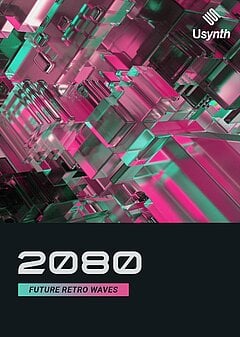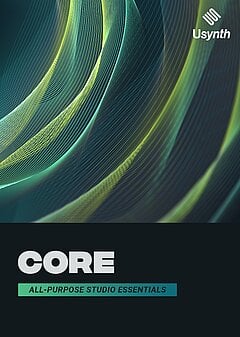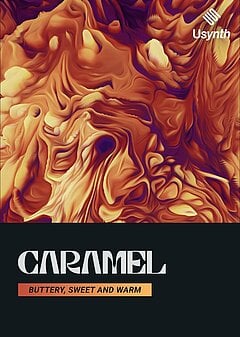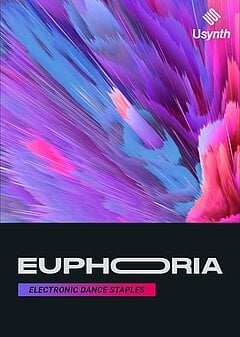The 5 Best Synth VST Plugins
An arsenal of powerhouse synths you can depend on in a wide range of genres, even if you’re just starting out
JANUARY 9TH, 2022
By the end of this article you will have a great overview about some nice synth vst plug-ins.
1. Usynth
If you want to get to your desired synth sound in as little time as possible, there’s no more efficient way to do it than with UJAM’s Usynth. It comes bundled with 4 unique synth profiles: CORE (Legends, staples, evergreens), EUPHORIA (EDM leads), CARAMEL (pads) and 2080 (everything synthwave). It has a Randomize control you can use to auto-generate as many different sounds as you want, and it’s impossible to create a bad sound this way — we’ve tried! All the heavy lifting is done behind the scenes (wavetable selection, unison, effects and far more), meaning less time spent on sound design and more time spent finishing songs!
Usynth is perfect for producers who prefer fewer knobs and faders without sacrificing sound quality, especially if you find it challenging to translate the sounds you hear into your head into your DAW. It’s still a very complex synthesizer, capable of producing a wide variety of sounds ... only you don’t have to know how it creates those sounds to make the most of it. You don’t need to understand all the ins and outs of software synthesizers to begin creating polished, professional songs immediately.
2. REAKTOR PRISM
This synth VST from Native Instruments relies on physical modeling to create sounds — simulating the physics responsible for the sounds we hear in physical instruments. However, REAKTOR PRISM isn’t designed to mimic acoustic instruments, but rather to incorporate a living, breathing quality into everything you create. Whenever something sounds too “digital,” layer it with one of PRISM’s presets, tweak it slightly to fit your needs, and you’ll instantly hear more dimension in your mix.
You can use this synth to create string, blown, metallic and glassy sounds, amongst many other timbres — plus, you can seamlessly transition between them and create any hybrid sounds you choose. A word of caution, though: if you’re not used to physical modeling synthesis, your best bet will be manipulating the presets. It’s very difficult to create good sounds from scratch unless you have a detailed understanding of the mechanics of this synthesis technique. That said, there are some fantastic presets in PRISM, and once you know your way around the UI you can modify the patches quite easily. Just be careful with the Feedback knob in any physical modeling synth — too high and it will get dangerously loud!
3. Reason+
Did you know that Reason+ now functions as a VST you can use in nearly any DAW? This is less about one synth, and rather about a collection of them, as all of its synths and effects come included with the Reason DAW — let’s take a look at a few:
Europa has gotten some attention since its release for its powerful morphing qualities, enabling one patch to borrow certain qualities of another by using one of its Spectral Filter settings; this effect is similar to that of a vocoder or Serum’s Reverb filter, transferring one spectral profile onto another. Reason+ also contains Friktion, a surprisingly flexible physical modeling synth focused on bowed and plucked string sounds (as opposed to the purposely unrealistic sound of PRISM) — it comes in handy in a pinch if you ever want to add solo strings to a song. There’s also the classic Thor synthesizer, which offers a monster collection of different types of oscillators and filters, designed to give you as much power and timbral capability as possible.
4. Chipsounds
If you like creating chiptune or any sort of retro game-inspired EDM, chipsounds provides you with an enormous number of possibilities with authentic hardware synthesizers found in classic machines. Everything is sampled from the original hardware (rather than using wavetables), which means you can use some of your favorite sounds from days gone by, exactly how they originally sounded.
Chipsounds also contains a complex arpeggiator designed to mimic the music and sound effects of retro video games, rather than having to create them all by hand. There are tons of presets for this, which you have a ton of control over if you want to create your own rapid pitch-based effects. You can seen the impact your modifications have on the waveform using the oscilloscope on the right hand side of the UI, giving you rapid feedback should you want it. For any producer who dabbles in chiptune music, this plugin is an absolute must-have!
5. REAKTOR Blocks
Love modular synths but don’t want to pay the thousands of dollars it costs to build a half-decent hardware rig? REAKTOR Blocks will get you surprisingly close for a fraction of the price. Not only do the modules sound fantastic, they also offer an excellent way to familiarize yourself with the ins and outs of routing (a topic you can discover more about in our Guide to Learning any Software Synth Quickly), which will open up a whole new realm of sound design possibilities if this isn’t a strong suit for you.
You get to see the virtual patch cords connecting various different aspects of your synth patch together, with 26 different modules to choose from. While this is all completely unnecessary if you own Usynth (since all the work is done under the hood for you) ... if you like to think of yourself as the “mad scientist” type of producer, Blocks offers possibilities you won’t want to pass up as you experiment to your heart’s content.
Wrapping up
There are, of course, many other excellent synths on the market, but the 5 we discussed above will open up most of the sound design possibilities you’ll want — especially if you also have some of the classic powerhouses like Serum and Massive. Some of them, like PRISM, are actually very inexpensive for the possibilities they offer. Further proof that you can create great music without sacrificing an arm and a leg! Have fun, experiment, and try out a few new tools; after all, occasional gear envy is a good thing!
About the Author
Harry Lodes is a copywriter, marketing consultant and content writer for audio and ecommerce brands. He lives in the Philadelphia area, releasing Eastern/Western hybrid EDM under the artist name KAIRI hearkening back to his roots in Berklee College of Music.
Stay up to date
Sign up and we’ll send you an e-mail with product news and helpful stuff every now and then. You may unsubscribe at any time.
Defy Limits
We develop software solutions that enable people to create, consume and interact with music.






